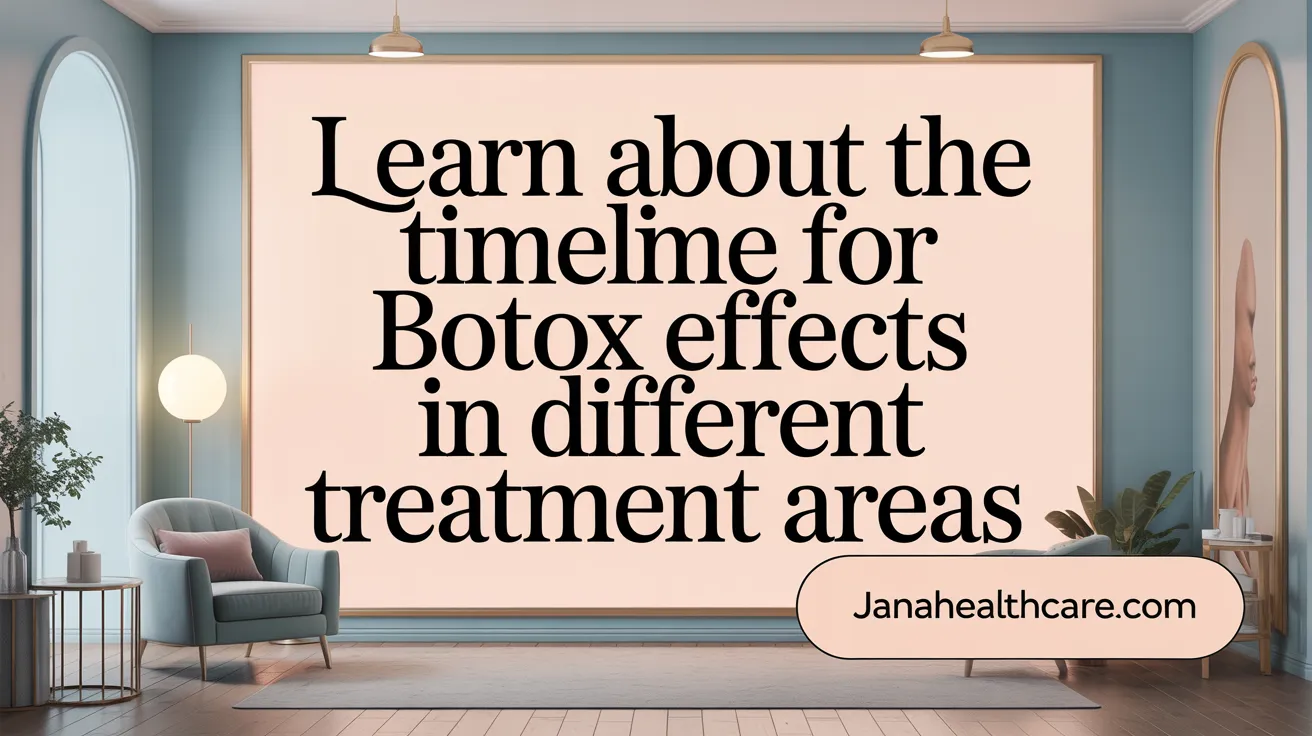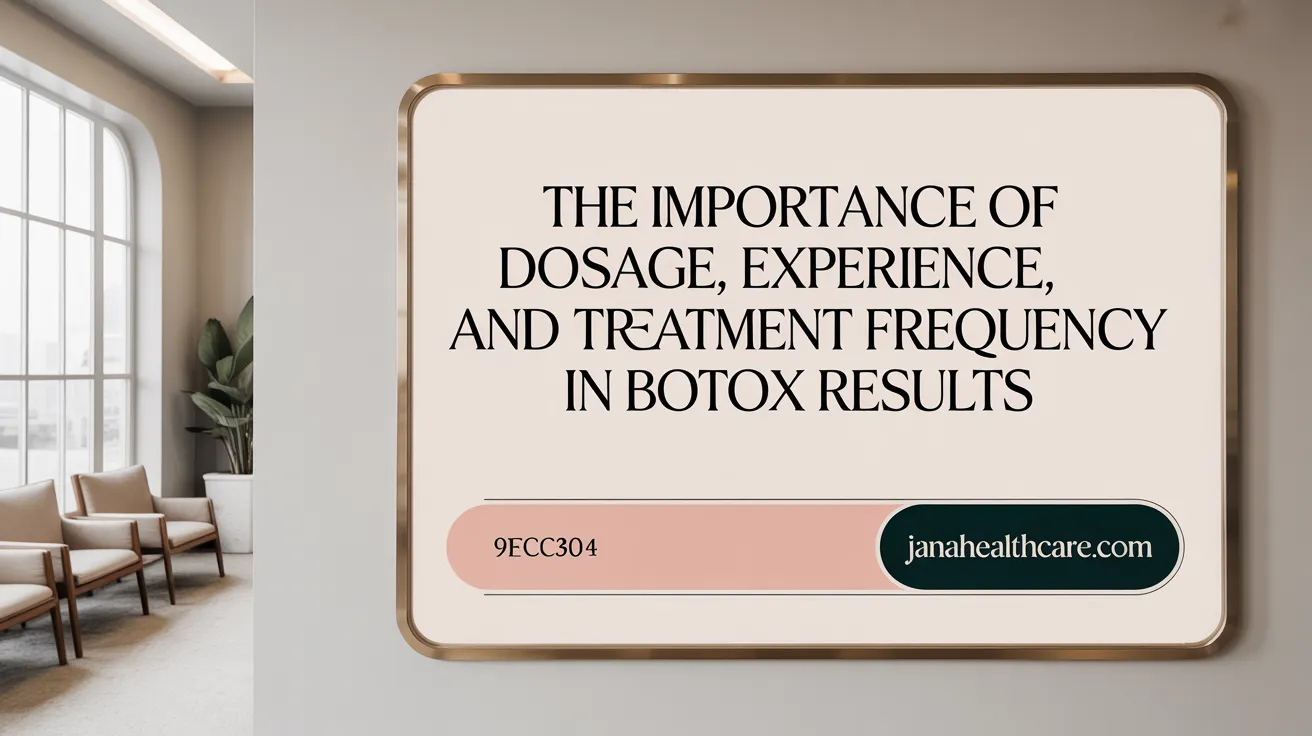Understanding Botox and Its Temporary Effects
Botox, a widely popular cosmetic treatment, temporarily reduces wrinkles by relaxing targeted facial muscles. Derived from the botulinum toxin produced by Clostridium botulinum, Botox works by blocking nerve signals responsible for muscle contractions, thereby smoothing fine lines and wrinkles. While it offers significant aesthetic benefits, Botox is not permanent. The duration of its effects varies, typically lasting between three to four months but sometimes extending up to six months. Understanding the factors influencing Botox longevity can help patients maximize and maintain their youthful appearance.
Typical Duration and Onset of Botox Effects

How long do Botox results typically last?
Botox effects generally last between three to four months for most people. Some patients may experience results lasting up to six months, particularly with repeated treatments that gradually weaken targeted muscles. However, the exact duration varies based on factors like metabolism, dosage, and the area being treated. See more on Factors Influencing BOTOX Longevity.
When do Botox effects start to appear and when are full results visible?
Initial improvements from Botox injections usually begin to appear within three to five days after treatment. Most patients see significant changes within a week, with full results becoming visible around 10 to 14 days post-injection. The results develop gradually as the muscles relax and wrinkles soften. For more details see Botox results timeline.
Are there differences in duration based on the area treated?
Yes, the longevity of Botox can differ depending on the treatment site:
- Forehead and eyebrow wrinkles typically experience effects lasting about three to four months.
- Crow’s feet around the eyes also tend to respond similarly, with effects lasting three to four months.
- For medical treatments, such as excessive sweating, Botox effects can last up to six months. Learn about Botox treatment duration.
Common treatment areas
Botox injections are commonly administered to areas including the forehead, glabellar lines (between the eyebrows), and around the eyes (crow’s feet). These regions are prone to dynamic wrinkles from frequent muscle movement, making them ideal targets to smooth lines and improve facial appearance.
This timeline and typical duration can help patients set realistic expectations and plan maintenance treatments to sustain their desired cosmetic outcomes. For guidance on maintenance treatments for Botox and post-treatment care for Botox see the linked resources.
Individual Factors Influencing Botox Longevity

How does metabolism affect Botox duration?
Metabolism plays a crucial role in the longevity of Botox effects. Individuals with faster metabolisms tend to break down the Botox toxin more quickly, which results in a shorter duration of muscle relaxation and wrinkle reduction. Conversely, those with slower metabolic rates may enjoy longer-lasting results, as the toxin remains active in the muscles for an extended period (Factors Influencing BOTOX Longevity, Impact of metabolism on Botox, Metabolism and Botox effectiveness).
Does age influence how long Botox lasts?
Age significantly impacts how long Botox lasts. Younger patients often experience more durable outcomes because they have better skin elasticity and a faster metabolism, both of which help the Botox effects persist. On the other hand, older individuals tend to see shorter durations due to the natural decrease in skin elasticity and changes in muscle function associated with aging (Age and BOTOX Effectiveness, Impact of age on BOTOX results, Age effects on BOTOX longevity).
How do muscle strength and facial movements impact Botox duration?
The strength of facial muscles and the frequency of facial movements also affect Botox longevity. People with stronger facial muscles or those who use their facial muscles frequently (e.g., expressive people) typically experience earlier wear-off of Botox effects. Enhanced muscle activity accelerates the breakdown of the toxin, leading to a quicker return of wrinkles (Muscle activity and Botox effects, Botox muscle activity, Muscle strength and Botox wear-off).
Genetic and biological differences
Aside from metabolism, age, and muscle activity, genetic and biological factors contribute to individual variations in Botox duration. These include differences in immune responses, skin type, and enzymatic activity, all of which influence how the body processes and responds to Botox treatments. Although these factors are less easily controlled, understanding them helps in personalizing treatment plans for optimal results (Genetic makeup and Botox, Botulinum toxin treatment duration variability, Factors affecting botulinum toxin efficacy).
Treatment and Provider Factors Affecting Botox Duration

How does dosage impact the longevity of Botox?
Higher doses of Botox can extend the duration of its effects, allowing results to last longer than the typical 3-4 months. However, using a higher dose requires careful balancing to avoid side effects such as muscle paralysis or eyelid drooping. Skilled administration by an experienced provider is essential to safely optimize dosage and achieve longer-lasting outcomes. For more details, see Impact of Dosage on BOTOX Results.
Why is the injector's experience important?
The injector's expertise is crucial in determining both the effectiveness and longevity of Botox results. Precise injection placement and proper dosing are key technical skills that experienced providers possess, which help ensure that the treatment targets the correct muscles without affecting others. This precision maximizes wrinkle reduction and helps maintain results for a longer period. Learn more about Factors influencing BOTOX longevity.
Can repeated treatments affect Botox longevity?
Yes, repeated Botox treatments can lead to muscle conditioning, where the targeted muscles gradually weaken over time. This weakening may cause the muscles to stay relaxed longer, potentially extending the duration of Botox effects beyond initial treatments. Regular maintenance treatments every 3 to 4 months are recommended to sustain and possibly prolong results. Additional insights are available in Maintenance treatments for Botox.
Are there differences in Botox formulations affecting duration?
Various botulinum toxin products such as Botox, Dysport, Xeomin, and newer ones like Daxxify share the same basic mechanism of blocking nerve signals to muscles. They differ slightly in onset time and how long their effects last. Some formulations may provide a longer duration, but the choice depends on patient needs and provider recommendations. For more, see Botox vs. Xeomin vs. Dysport vs. Jeuveau.
| Factor | Influence on Duration | Notes |
|---|---|---|
| Dosage | Higher doses may prolong effects | Must be balanced with safety considerations (Impact of Dosage on BOTOX Results |
| Injector Experience | Precise placement extends longevity | Expertise reduces side effects and improves outcomes (Factors influencing BOTOX longevity |
| Treatment Frequency | Regular treatments condition muscles | Leads to potentially longer-lasting relaxation (Maintenance treatments for Botox) |
| Type of Botulinum Toxin | Slight variations in onset and duration | Choice tailored to patient and treatment area (Botox vs. Xeomin vs. Dysport vs. Jeuveau) |
Lifestyle and Post-Treatment Factors Influencing Botox Results
How do lifestyle habits affect Botox longevity?
Lifestyle habits play a significant role in determining how long Botox longevity lasts. Smoking narrows blood vessels and decreases skin circulation, which hinders healing and diminishes the effectiveness of Botox. Similarly, heavy alcohol use accelerates the breakdown of the toxin, while excessive exposure to UV rays from the sun damages the skin's collagen and elastin. These factors can cause Botox effects to wear off faster than expected.
Does physical activity impact the duration of Botox?
Physical activity, especially high-intensity exercise shortly after Botox injections, can shorten the duration of Botox effects duration. Increased blood circulation and heightened muscle activity speed up the metabolism of Botox, which reduces how long it remains effective. Thus, avoiding strenuous workouts for at least 24 to 48 hours after treatment is recommended for sustaining longer-lasting results.
What post-treatment care helps maximize Botox results?
Proper post-treatment care for BOTOX is essential for maximizing Botox longevity. Patients should avoid rubbing or massaging the treated areas to prevent unwanted spreading of the toxin. It is also advised to steer clear of strenuous physical activity and heat exposure, such as saunas and tanning beds, for a day or two after treatment. Additionally, protecting the skin with sunscreen and avoiding UV exposure helps prevent premature skin aging that can undermine Botox benefits.
Can skincare routines influence Botox effectiveness?
A healthy skincare routine complements Botox treatments by supporting overall skin health. Staying well-hydrated, using antioxidant-rich skincare products, and consistently avoiding habits that damage the skin (such as smoking) all help to maintain the skin’s elasticity and appearance. This foundation ensures that Botox effects are prolonged and that treated areas remain smooth and youthful for a longer time. For more on these factors, see Maintaining BOTOX Results with Healthy Habits.
Maximizing and Maintaining Botox Results Over Time

How often should Botox maintenance treatments be scheduled?
To maintain smooth, youthful skin, most patients are advised to schedule Botox maintenance treatments every three to four months. This routine helps sustain the relaxing effects on facial muscles and prevents wrinkles from reappearing or deepening.
Can combining Botox with other treatments enhance longevity?
Yes, combining Botox with other cosmetic procedures such as dermal fillers, chemical peels, laser therapy, or microneedling can amplify overall facial rejuvenation. These complementary treatments improve skin texture and volume, potentially enhancing and prolonging the aesthetic effects of Botox. Learn more about combining Botox with other treatments.
What are signs that Botox effects are wearing off?
Common signs include the gradual return of muscle movement in treated areas, reemergence of wrinkles or fine lines, and a less smooth skin appearance. Noticing these changes is a good indicator to plan for a follow-up Botox session.
Why is professional consultation important for Botox treatments?
Consulting with experienced, board-certified professionals is essential for safe and effective Botox treatments. Experts tailor dosage and injection placement to individual needs, manage realistic expectations, and monitor progress to maximize the duration and quality of results. Proper technique and personalized care greatly influence satisfaction and treatment longevity. Discover more about the importance of professional consultation for Botox.
Maintaining Botox results involves consistent care, strategic treatment scheduling, and expert guidance to ensure the best and longest-lasting outcomes. For detailed insights on maintaining Botox results, visit the linked resources.
Sustaining Youthful Skin with Informed Botox Choices
Botox remains a reliable and effective solution for reducing wrinkles and enhancing youthful appearance, with effects typically lasting between three to four months. However, longevity varies significantly based on individual biology, treatment parameters, lifestyle choices, and aftercare. Understanding these factors and working with qualified injectors can maximize the duration and quality of results. Consistent maintenance treatments, healthy lifestyle habits, and protective skincare play vital roles in sustaining Botox benefits over time, empowering patients to make informed decisions to maintain a smooth, rejuvenated look.
